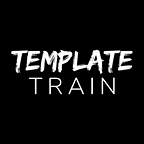Why Have Good Content If It’s Not Legible?
A cursory glance at websites and magazines reveals numerous fonts at work trying to keep the reader immersed in their content.
How many of these are really pleasing to the eye?
While some fonts may enhance your presentation design, they can be equally distracting or render your text illegible.
Have you attended an otherwise informative presentation where the text slides were difficult to read?
Maybe it was the wrong font choice or there were other typographic factors that made for a poor viewer experience.
If you are wondering how to avoid these mistakes in your presentation, pay attention to two key elements — readability and legibility.
While readability focuses on how words and text blocks are arranged on your slides, legibility is all about typefaces and their special effects.
FONTS FOR DISPLAY AND BODY TEXT
Before you choose a font, think about its place in your text. Will this serve as a headline, short quote or trigger message? Are you planning to use the font for bullets and body text? Some fonts work best for headlines or calls-to-action, whereas others work well in small and large font sizes. Choose display and text fonts that are compatible.
STICK TO ONE FONT FACE
To use or not to use serif faces? The debate is still raging and research studies haven’t provided a decisive conclusion yet. While serif has found favour in print, sans-serif scores when it comes to online text. The little feet of Times Roman (serif) make it easier to read rows of text blocks, but sans-serif like Arial, Verdana, Helvetica gel well with bullet lists and short texts.
SIZE MATTERS
Save your love of small sizes for clothes and use average-to-big sizes to make your text easy to follow. 16-pt is bare minimum for slide texts. Increase this to 28-pt for presentations in a large conference room. Use bigger text sizes for headlines. Don’t extend or compress your text font as this doesn’t translate well on large screens.
FOCUS ON SPACING
Use letter spacing or the distance between letters in a word to optimal effect. Increase the space to make your headlines or cue words stand out. Proportional spaced typeface makes it easier to scan text than monospaced.
TRACK YOUR TEXT ALIGNMENTS
There are no hard and fast rules regarding alignment of your body text. Use centred text for quotes and right alignment for shock value. Use left or justified text based on your individual preferences, but restrict the number of words in a line to 10 or 12.
USE TEXT CONTRASTS
Use a light background with darker text in well-lit rooms. Opt for a light gray background to reduce eyestrain. To grab attention and emphasize a point, utilize dark backgrounds with contrast colored texts.
Employ these points in your next presentations and see the difference.
